Amazing Winter Squash Recipes and Health Benefits
Recipe Key
Now that Fall is here, I am excited to be creating dishes with the incredible variety of winter squash many small farmers are now growing. Their sweet, nutty flavor and dense, nutrient-packed flesh is full of healthy carbs, phytonutrients and antioxidants. Here are their health benefits and some great recipes.
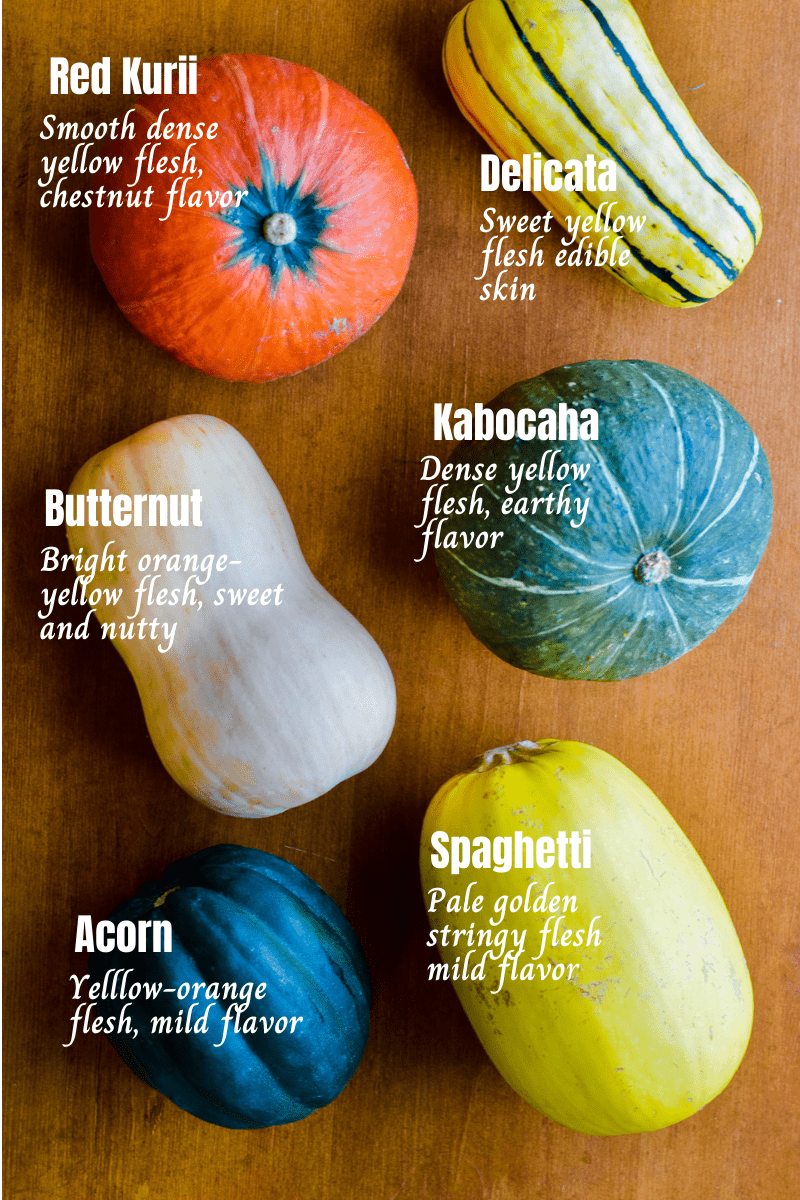
Fall in the kitchen means we’re beginning to transition from cooking summer dishes with soft juicy tomatoes to the thick-skinned squash of fall. Acorn, spaghetti, or butternut squash are the most popular but over the last few years many farmers markets sell even more delicious varieties like delicata, kabocha and red kuri.
Health Benefits of Winter Squash
One of the best things about winter squash is the type of starch they contain. The latest research shows not all starch is created equal. The starch-related components in winter squash have antioxidant, anti-inflammatory, as well as anti-diabetic and insulin-regulating properties.
Many of the carbs in winter squash come from polysaccharides found in the cell walls. These polysaccharides include pectins which help regulate release of sugar into our digestive tract following a meal helping to keep our blood sugar stable.
Winter varieties tend to be more nutrient-dense than summer squash. They generally contain much more beta-carotene and more of several B vitamins.
Heart Healthy
The high fiber and low fat make it a heart friendly choice. Winter squash is high in Vitamin C which is an immune booster and simultaneously reduces the risk of developing or worsening symptoms of hypertension.
Winter squash is rich in potassium which aids in cardiovascular health by lowering blood pressure when eaten frequently.
The folate (vitamin B9) in winter squash strengthens the walls of blood vessels, which improves blood circulation. They also contain B6, which your body needs for energy and red blood cell formation.
Good for Eyes and Skin
Squash’s tangerine color indicates abundance of powerhouse nutrients known as carotenoids. They contain high levels of beta-carotene (both of these nutrients your body automatically converts to vitamin A). Vitamin A is a powerful natural anti-oxidant and is required by the body to maintain the integrity of skin and mucus membranes. It is an essential vitamin for good eye-sight.
Keeps Your Bowels Moving
Even though squash has a creamy texture it has lots of fiber to help clear away cholesterol and keep your pipes clean. Healthy bowel movements eliminate toxins and inflammation.
Winter squash, especially the ones that you can eat the skin have a high fiber content, which has been linked to a decreased risk of diabetes, stroke and obesity.
Helps Balance Blood Sugar
Much of the fiber in winter squash is soluble fiber. This type of fiber helps regulate blood levels of glucose and cholesterol.
Good Source of B Vitamins
Winter squash provides a good amount of five B-complex vitamins! These are B1, B3, B6, pantothenic acid, and folate. The B-complex vitamins have dramatic mood-elevating effects, more so than almost any other nutrient! This complex of vitamins is crucial for nerve function and nerve cell metabolism, which produce optimal neurotransmitter levels.
Reduces Inflammation
The omega-3 fatty acids provided by winter squash, together with its carotenoids and phenols, make it anti-inflammatory.
Tips for Buying & Cooking Winter Squash
Choose squash that has a firm exterior and no soft spots or cracks. It’s interesting to know the skin of winter squashes becomes even firmer as they mature. The skin should be hard to pierce with your fingernail. A soft and shinny skin indicates an unripe squash. If it has soft spots or a moldy stem it’s too old.
Knock on the skin with your knuckle: if it sounds hollow, it is ripe; if it sounds dull, the squash may either be unripe or spoiled.
Although some squash may last several months in the right storage conditions, it is recommended to use them within one month for best flavor. Keep them dry and in a cool place.
Sometimes it takes a bit of effort and determination and a sharp chef’s knife to cut through the tough exterior of a winter squash. If you’re having a hard time cutting it, put it into a 400 degree oven for 15 minutes to soften it up a bit. Cutting it will be easier.
A sharp vegetable peeler is the perfect tool to remove the skin from butternut squash, honey squash or sugar pumpkins. I buy a new peeler every fall.
Winter Squash Varieties & Recipes
Spaghetti Squash
The fun thing about this squash is when its cooked the flesh separates in strands that resemble spaghetti pasta. The yellow colored ones are the ripest and best to eat. The larger ones are also more flavorful than the smaller ones.
Recipe – Spaghetti Squash with Kale and Sun Dried Tomatoes
Spaghetti Squash with Kale and Sun Dried Tomatoes is a satisfying fall dish that’s plant rich, low carb and gluten free. The robust flavor comes from sautéing the spaghetti squash ‘noodles’ with garlic, sun dried tomatoes, kale and pine nuts to create a super delicious weeknight dinner.
Delicata Squash
I love delicata squash because it has delicate, edible skin. No peeling required! The creamy yellow flesh is wonderfully sweet. It’s only available in the fall. You can find it in most farmers markets, health food stores and some supermarkets.
Recipe – Thai Squash Curry (Vegan or Paleo)
This mouthwatering Thai Squash Curry made with delicata squash is easy to make, warm, comforting, rich and satisfying, loaded with vegetables and super healthy. The recipe can be made vegan or paleo and is ready in 30 minutes!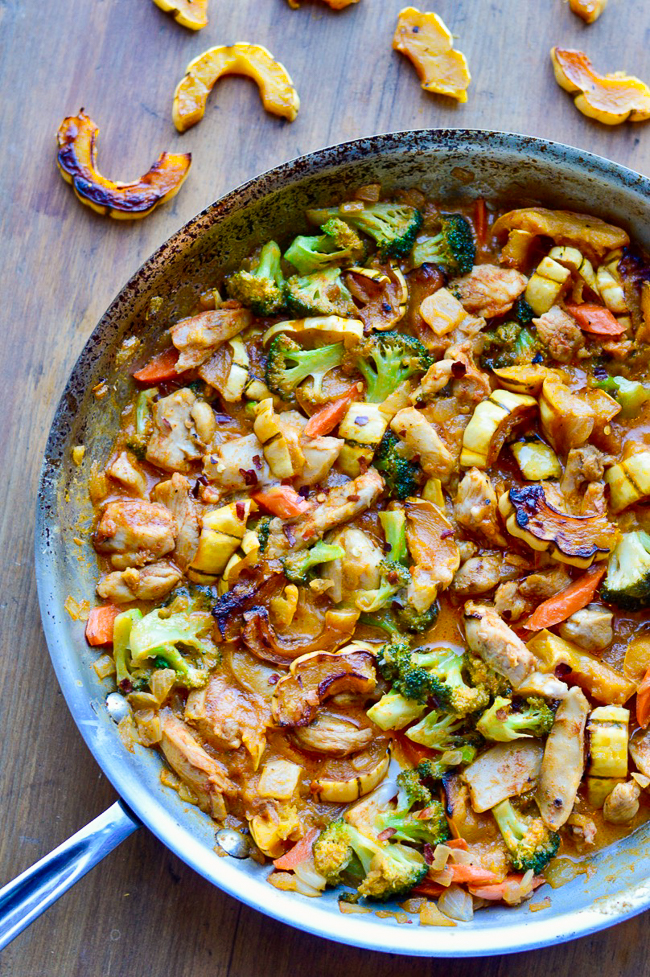
Kabocha Squash
This squash is commonly called Japanese pumpkin with beautiful yellow-orange flesh and seeds that are very similar to pumpkin seeds. It has a sweet, slightly nutty flavor. It is rare so grab this one if you see it. It’s another one with an edible peel, that softens up when it cooks. Eating the peel adds even more fiber.
Recipe – Roasted Kabocha Squash Soup
This roasted kabocha squash soup, from Goop is thick and creamy, with ginger, cumin, and coriander. It can be made vegan or paleo. Perfect for fall!
Butternut Squash
This is the most popular winter squash and is easy to find. It has a fine-textured, deep-orange flesh with a sweet, nutty flavor. The more orange the color, the riper and sweeter the squash. Butternut squash seeds are nutritious and similar to pepita (pumpkin seeds).

Recipe – Spicy Chickpea and Butternut Squash Curry with Coconut Milk and Turmeric
This hearty and healthy creamy curry is one of the most popular recipes on my blog. It’s an easy one pan comfort food meal with spiced chickpeas, butternut squash, greens and coconut milk. 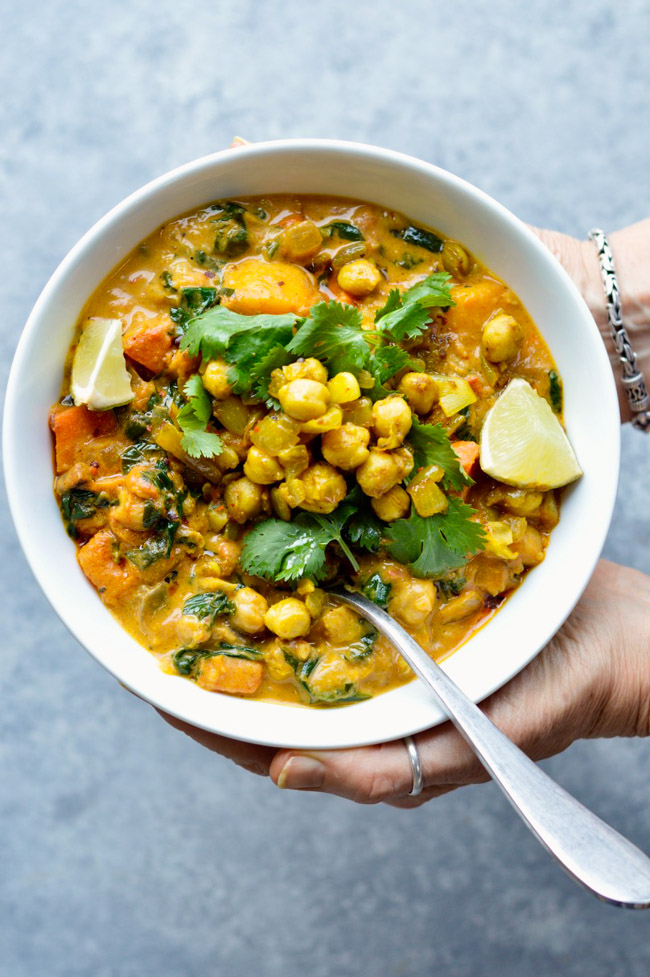
Red Kuri Squash
This is a smooth skinned red-orange Japanese winter squash with a teardrop-shape. The golden flesh is smooth, dry, sweet, and rich. Its flavor is sweet and nutty, reminiscent of chestnuts. The skin is edible, no peeling required. Great for roasting.
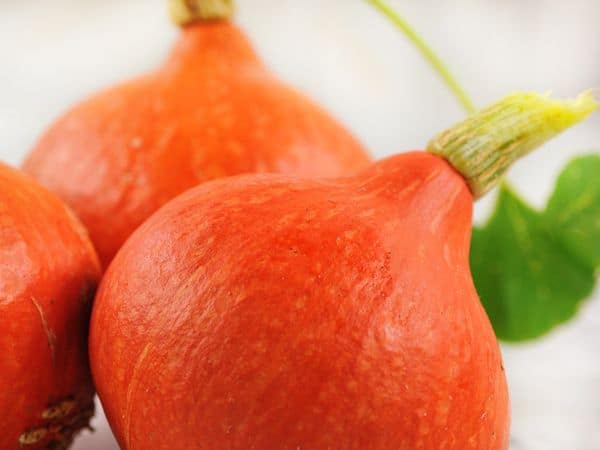
Recipe – Red Kuri Squash with Tahini Greens and Almonds
This is a recipe from Heartbeat Kitchen for a roasted red kuri squash salad type dish. The squash is roasted then topped with shredded kale and a delicious lemon tahini sauce. It doesn’t have to be peeled before roasting, the skin is edible!
Acorn Squash
Acorn squash is another very popular winter squash variety. The flesh is golden-yellow as in pumpkins. They come in a variety of colors and sizes; dark green, yellow, yellow-orange, variegated. When roasted, the skin can get soft enough to eat, but for those who prefer it skin-free, the meat separates from the peel easily. It’s a great one to stuff!
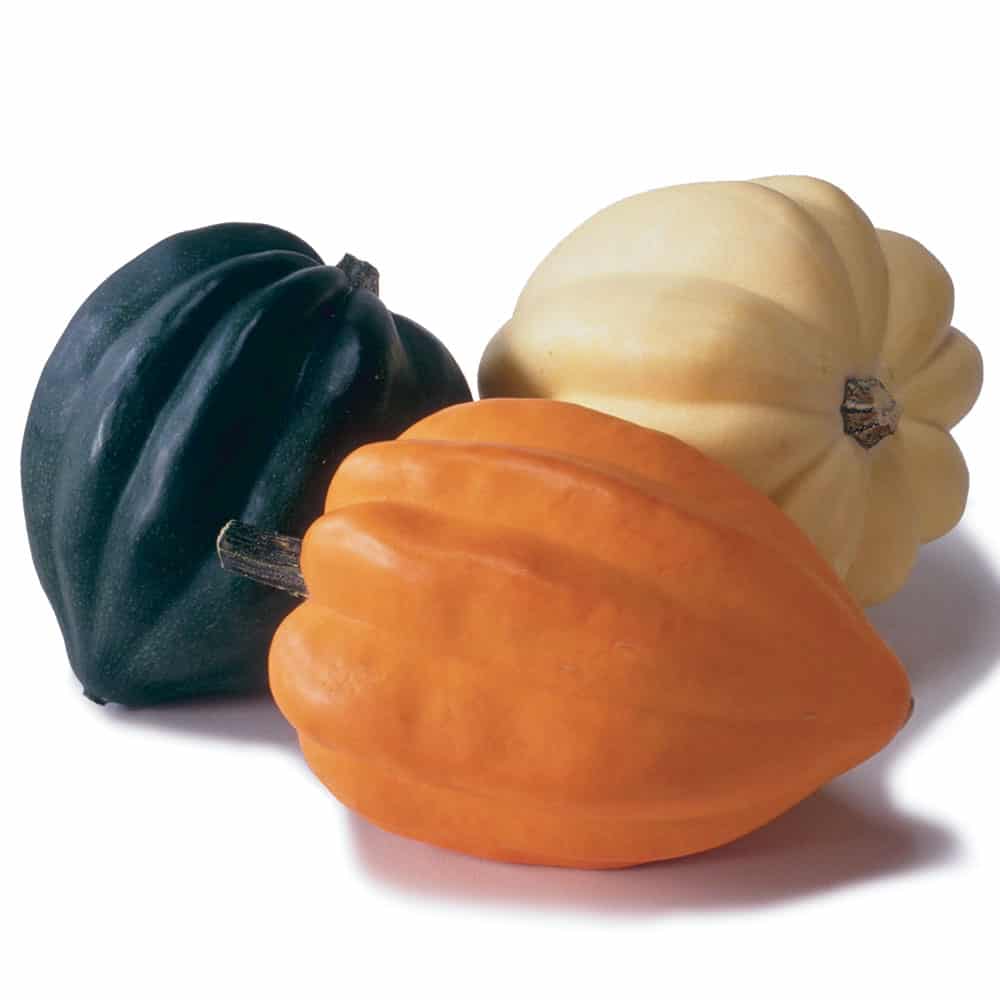
Recipe – Easy Roasted Acorn Squash with Maple Butter
This is a really simple recipe from Fifteen Spatulas for roasting acorn squash. You can use the same recipe for kabocha or red kuri squash. Coconut oil or ghee can be substituted for the butter if you’re dairy free.
In Conclusion
There is a bounty of winter squash out there, and it’s really fun to play with the many different varieties. Make the squash the star of the show or a side dish. Either way, have fun cooking!

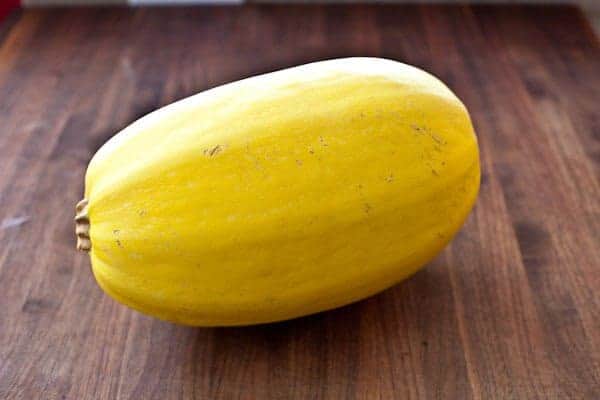
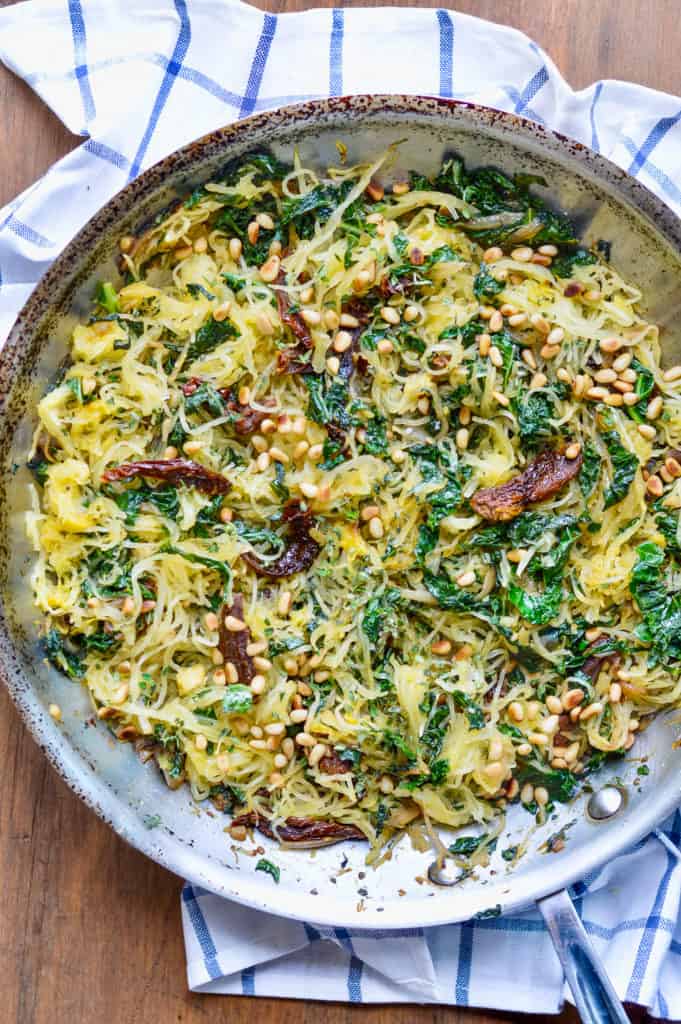

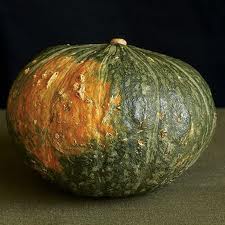
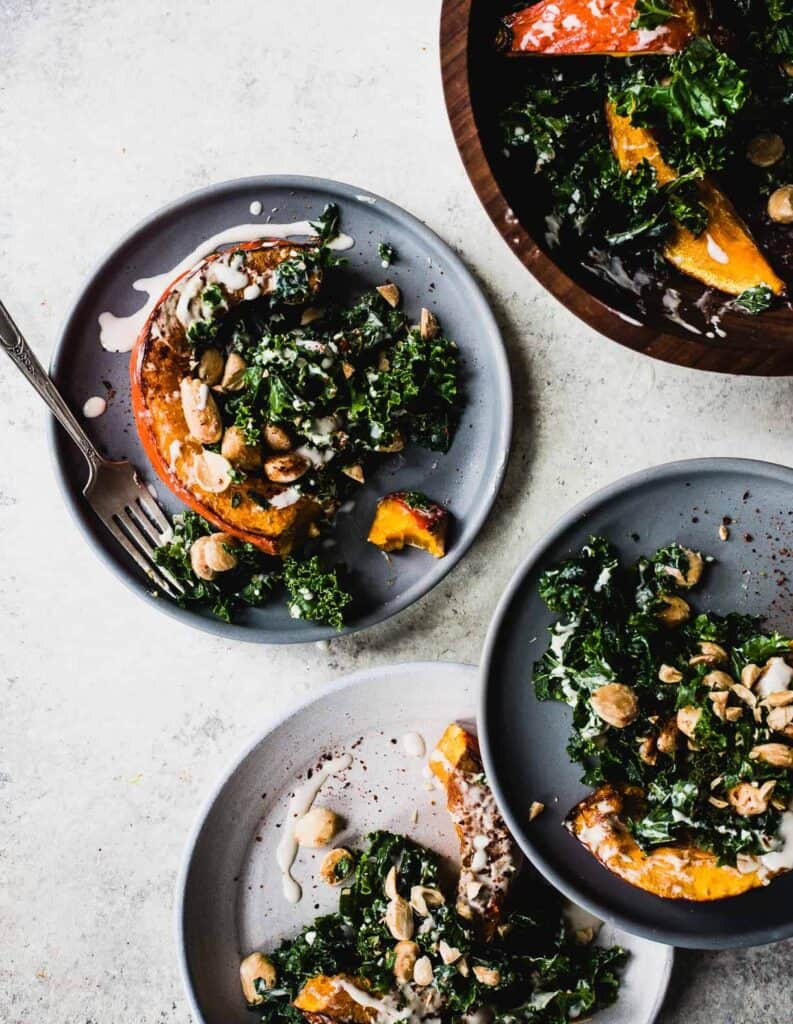
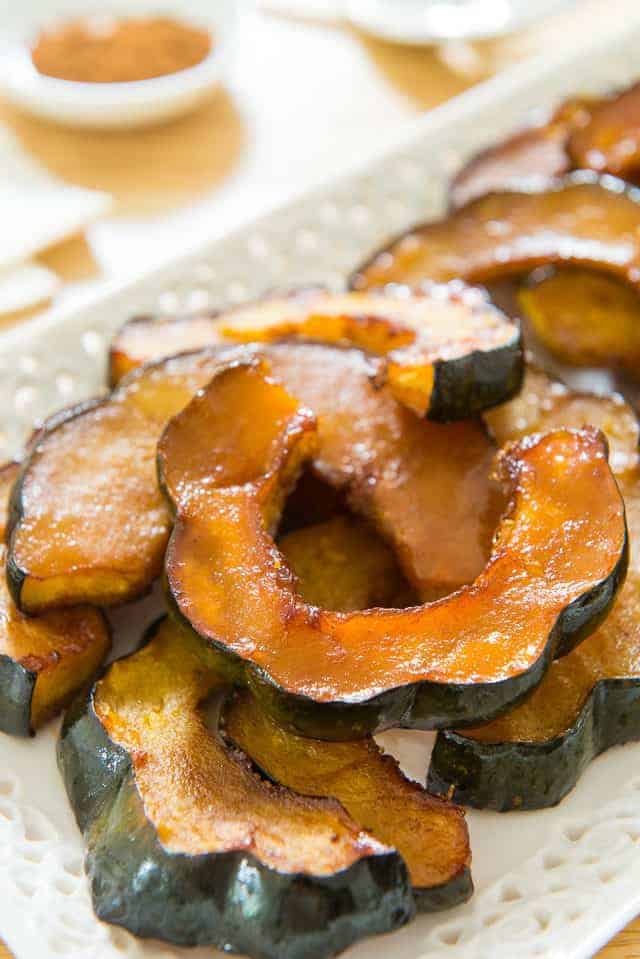
Can’t wait to try these. Thanks!
Thank you Patricia for letting me know you enjoyed the recipes. I always love hearing from you. It sounds like you’re going to have lots of fun with winter squash this fall. Much love to you!